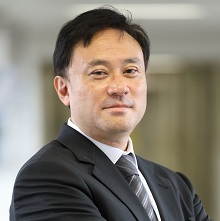Synaptic plasticity and its clinical application

Professor Takuya Takahashi
My personal interest is the molecular mechanisms underlying synaptic functions and their clinical application. We have focused on AMPA receptors for over a decade. We discovered experience or learning drives AMPA receptors into synapses. We also found neonatal maltreatment alters synaptic AMPA receptor trafficking. Further, we have developed novel techniques to optically-inactivate AMPA receptors in vivo. While those research have been conducted with rodent using molecular and cellular biological techniques, electrophysiological approach, and imaging with two photon laser scanning microscope, I got interested in the application of findings obtained from basic neuroscience on synapses to human biology to clinics. In collaboration with FUJIFILM, we found a compound which facilitates synaptic AMPA receptor delivery leading to the acceleration of recovery of motor function with rehabilitation after brain injury. We also identified a target protein, and target protein deficient mice failed to exhibit the acceleration of motor function recovery after brain injury with this compound. This prominent effect was also observed in non-human primate. We are currently preparing for the clinical trial of this compound. We also developed a probe to detect AMPA receptors with positron emission tomography (PET). We could observe specific high quality signal in the brain of non-human primate. We performed first-in-human test and detected potential specific binding signals in living human brain. We started imaging patients of various neuronal disorders such as depression, schizophrenia, addiction, epilepsy, stroke and neurodegenerative diseases. (2021.6)




